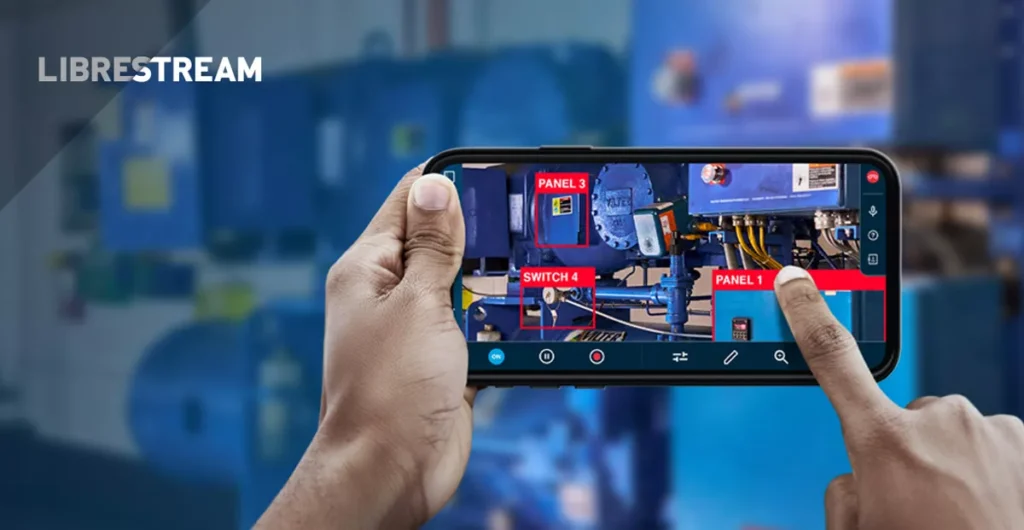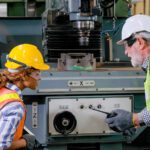Hurricane Ian, which struck Florida in late September last year, was a devastating storm and a harsh reminder of the impact of Mother Nature’s wrath. Unfortunately, extreme weather events are becoming more frequent and powerful, and our aging grid is struggling to keep up.
COMMENTARY
Sanibel Island on Florida’s west coast, for example, lost power after Hurricane Ian made landfall, and the causeway connecting the island to the mainland was destroyed. There were many powerful photos of the aftermath, but the image of the long line of utility trucks on a temporary causeway is one that stuck out to me. The caravan was a symbol of hope and further evidence of the incredible work of utility frontline workers. The image, however, should also remind us that we must do everything we can to support frontline utility workers, especially given that the industry is in the midst of a significant transformation.
Part of the transformation is driven by technology as utilities focus on modernization efforts to strengthen critical infrastructure and keep up with changing energy patterns. As a result, operations and maintenance (O&M) workers (Figure 1) must change how they’ve done things for more than 25 years, and utilities need to reskill or upskill their current workforce to support this new technology.
The other part of the equation is the shift in workforce demographics. The entire industry faces an unprecedented workforce shortage brought on by the great resignation, high retirement numbers, and shorter tenure of experienced workers. Gone are the days when utility workers stayed at a company for their entire career. On average, workers between the ages of 25-34 remain at an organization for just 2.8 years. This is in stark contrast with the seasoned workforce, aged 55-65, who stay with an organization for 9.9 years on average. Furthermore, 50% of the utility’s workforce is set to retire over the next decade. As these employees retire, companies risk losing the knowledge that only comes with decades of on-the-job learning.

It’s clear the utility industry—and the electric power sector in particular—is changing. So now the question is: how can we support new and current employees for whatever may come their way?
Ensuring Institutional Knowledge is Stored … Shared
In the past, I’ve used a common sports analogy—the “next man up” or “next woman up”—to compare the changing workforce. Given the “right” employee for the job is not always available, others need to be prepared to step in and fill the gap. However, if the typical employee doesn’t have 20+ years of experience in their current role to rely on, how can they prepare for the unknown? Veteran workers have been doing their job for so long that they don’t need a documented workflow to quickly process engineer notes, drawings, and daily work logs. However, a less experienced employee does. They need access to the right tools, expertise of others, and data/learnings to complete tasks the right way and in a safe manner. This is where knowledge networks come into play.
Knowledge networks are essential for capturing the know-how of retiring employees who would otherwise take their learnings with them and serve as a replacement for “just-in-case” training that can take years to accumulate. The key is to provide the ability to capture this critical knowledge unobtrusively in the form of live video calls, recordings, images, and digital work instructions and make the information usable for others by tagging relevant data and analyzing unstructured data.
I want to highlight one example of the role of the knowledge network that I came across recently. A utility company I worked closely with was undergoing an upgrade of their hydroelectric plants that only happened once every quarter of a century. It is doubtful that current employees will still be working at the plant during the next upgrade, so they recorded what employees learned during the current cycle. This means the next man/woman up will benefit from knowing what occurred during the upgrade 25 years earlier. While the industry needs to start taking this type of long-term thinking, even data collected yesterday can be helpful today. It’s all about having information easily assessable if, when, and where it’s needed.
Key Technologies to Implement Today
Now that we’ve gone over the why, let’s dive into how. Below are four key digital transformation technologies (AR, IoT, AI, and NLP) that make knowledge networks possible, and the data collected useful.
- Augmented reality (AR) – The combination of hardware – whether smartphone, tablet (Figure 2), or wearable device – and digital transformation software specially built for industrial use cases can have powerful results. It closes the geographical gap between a field worker and a subject matter expert by allowing both parties to see, collaborate, and interact with the area the field worker is in. This is made possible by overlaying critical information stored in the knowledge network and allowing SMEs to communicate in a more visual manner, such as by circling and marking areas that need attention.
The benefits of AR in an industrial setting are impressive. We’ve seen up to 70% productivity gains, 65-70% increases in asset uptime, and 3x increases in daily inspections.
- IoT (internet of things) visualization – IoT data provides workers with critical information using object character recognition (OCR) and existing and real-time data. It automatically tags and displays relevant details via graphs, charts, and tables in a field worker’s field of vision or hand-held device.
- Artificial intelligence (AI) computer vision – Reducing the cognitive load on a workforce through AI computer vision can reduce the occurrence of injuries. Computer vision uses OCR object detection, image tagging, and auto-tagging to recognize objects and interpret content automatically. It can quickly identify assets and components and tag field content for future training and process improvement.
- Natural language processing (NLP) – As utility infrastructure goes through a modernization process, subject matter experts and suppliers might be in a different geographical location, and it is important that frontline utility workforces can collaborate with them. NLP helps bridge language barriers with live translation.
Another consideration is ensuring it’s possible to collaborate and access audio, video, and text documents in ultra-low bandwidth situations. Unfortunately, O&M workers often are entering less than ideal conditions, and access to reliable internet is not always available.

Rise of the ‘New Collar’ Worker
We’ve discussed the challenges the utility industry faces from a talent shortage and the role technology plays in helping fill those gaps—yet, the fact is, utilities still need to find the right employees to replenish their workforce. I recently authored a whitepaper, Powering the Utility Workforce of the Future, that highlights the fact that more than 85 million jobs could go unfilled by 2030. This should be a wake-up call for the industry that the status quo won’t be enough, and we need to get creative when thinking about hiring.
Undoubtedly, what the industry calls “new collar workers” will play a big part in filling the talent gap. New collar workers are candidates that don’t necessarily tick off all the boxes regarding training or education, but they can be successful with the right training and support. It’s a really exciting movement for both the employer and the employee. Employers have a bigger pool of candidates to hire from, and employees may have an easier time breaking into a new field and less chance of being overlooked based on a lack of experience.
For this type of new worker to be successful, however, they need to have the right level of support. This is another benefit of having a knowledge network and the right technology in place—hands-on training becomes the norm, and information is more readily accessible. It also gets people into the field quicker, all in a responsible and safe manner.
Setting up O&M for Success
Virtually every industry is experiencing a talent shortage, but if utilities don’t have enough knowledgeable workers, we all will feel the impact deeply. O&M workers ensure everything is running smoothly so our lights stay on and are often first on the scene after a catastrophic event.
Having the proper support from the right technology and thinking differently when it comes to hiring can be a game changer for an industry as crucial as utilities. The time is now for utilities to take a step back and create a plan to ensure all O&M workers—new and old—are set up for success.
—Gary McAuliffe is vice president, Global Energy & Utilities Sector, for Librestream.










